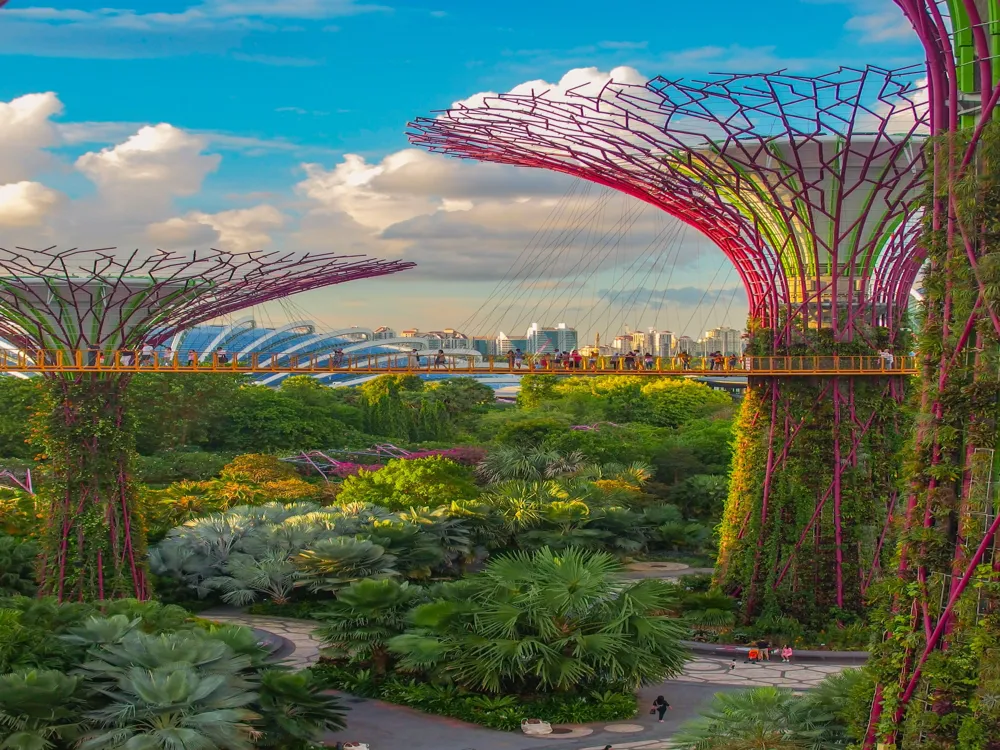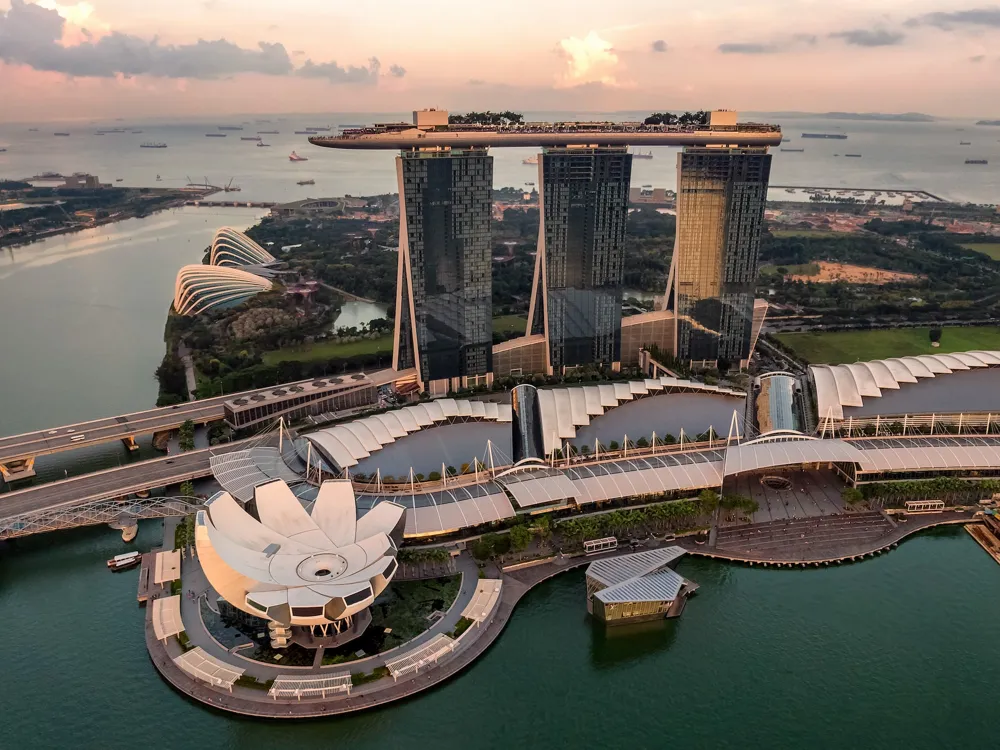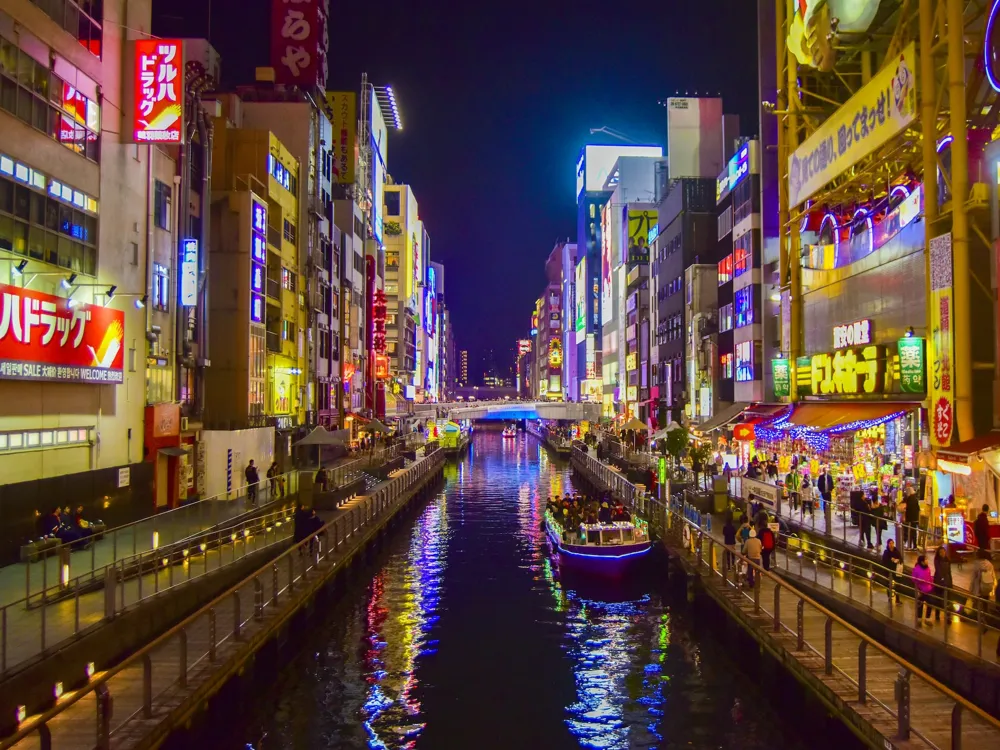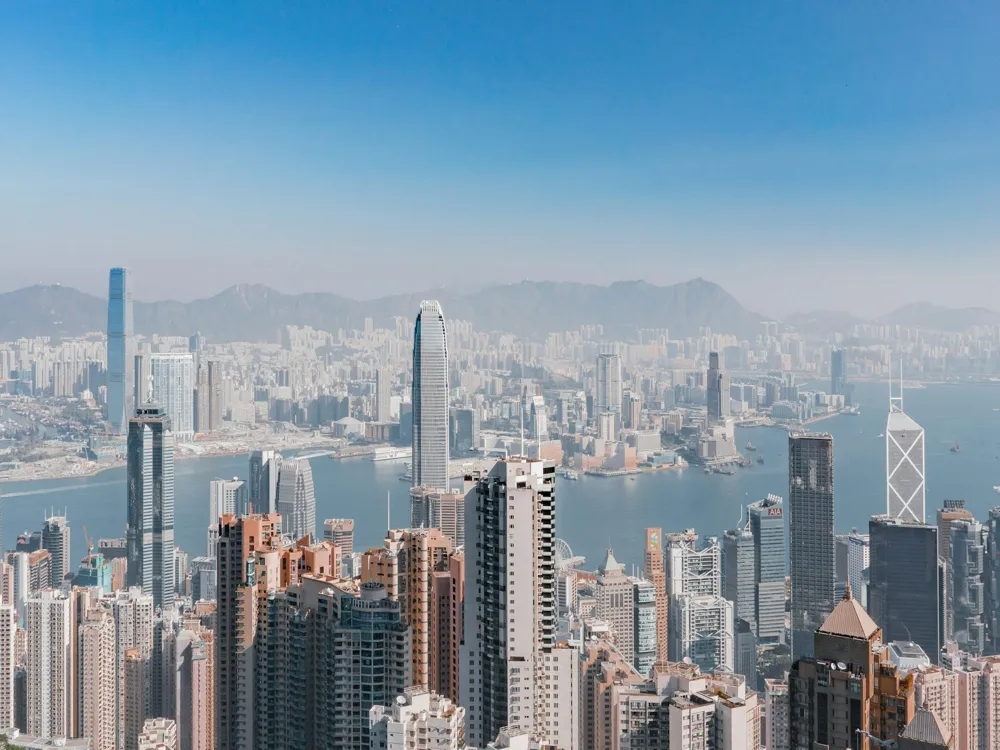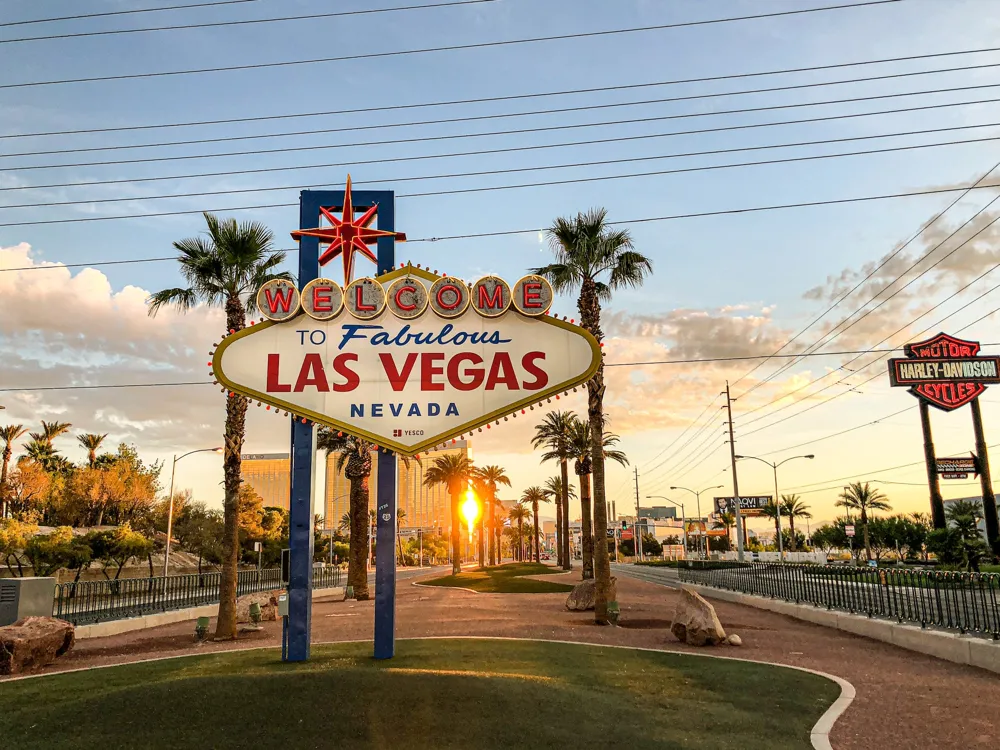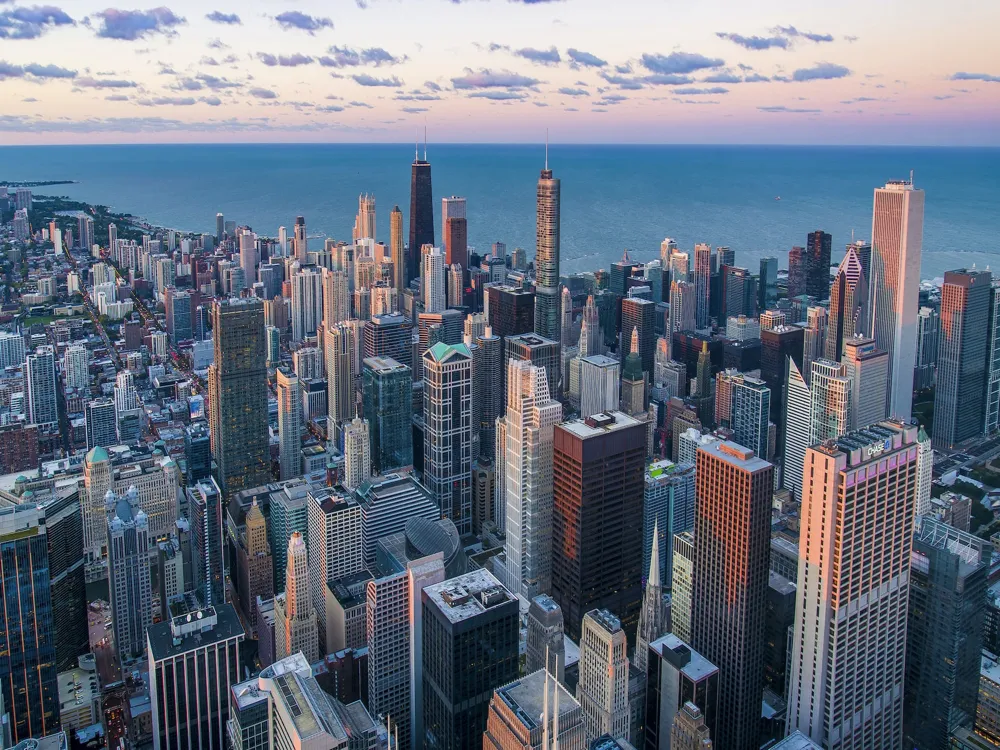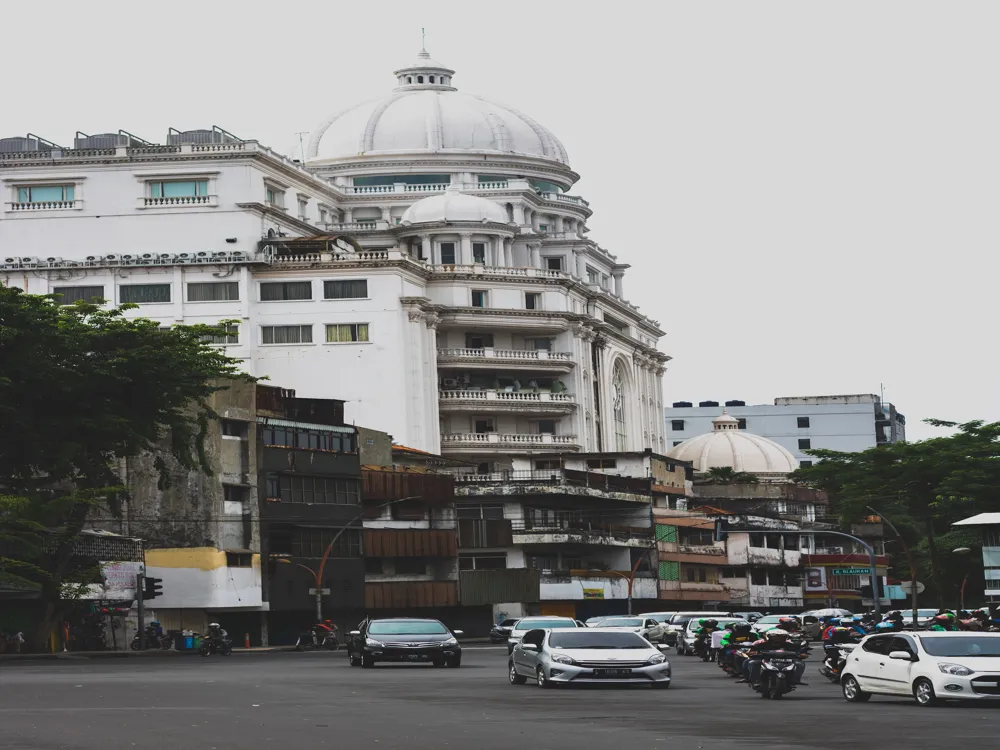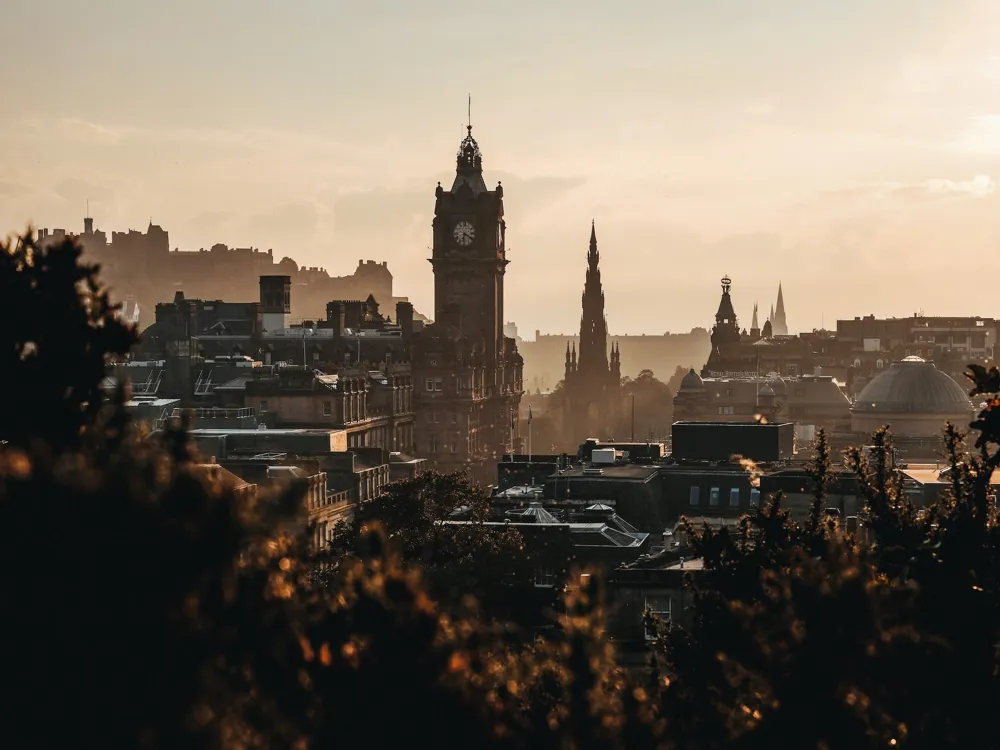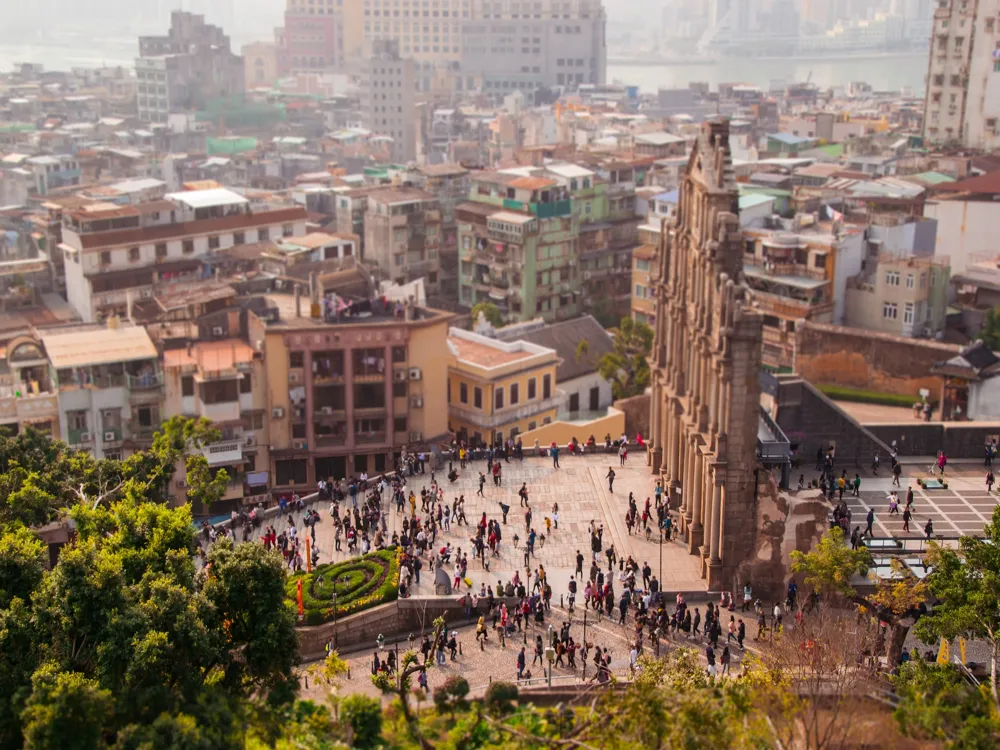Plan Your Travel To Singapore
Places To Visit In Singapore
Geylang

Singapore may be aptly called the city which never sleeps. A place where sophistication and gaiety run side by side, where sobriety and wildness travel parallelly, where the early bird and the night owl coexist in harmony, Singapore is a mark above the rest. Out of the several places that make up this bustling city-state, the one place that buzzes with excitement and thrill is Geylang. Situated at the eastern part of Singapore's central region, this township is home to a majority of the Malay community. Singapore's historical artefacts and topographical maps bear a witness to the fact that the word Geylang was used to signify the coconut plantations and marshlands lying in close proximity to the Kallang River.
Malayan vocabulary implies that "Geylang" might have originated from the word "geylanggan", meaning 'to crush' or 'to twist'. This may refer to the process of milk and meat extraction of the coconuts, a common occupation among the locals in order to thicken the gravies of their cuisine. Another possible reason behind the nomenclature of the place is from the word "gelang" which is a kind of edible creeper growing around this area. The vibrant culture of the Malays can be witnessed once you step into Geylang. Dotted with restaurants, shopping centres, leisure facilities and magnificent historical buildings, this place is more than just a red-light district. Contrary to popular belief, Geylang Serai is a residential, safe place and is an ideal hangout spot both in the day and at night.
Read More
Gillman Barracks
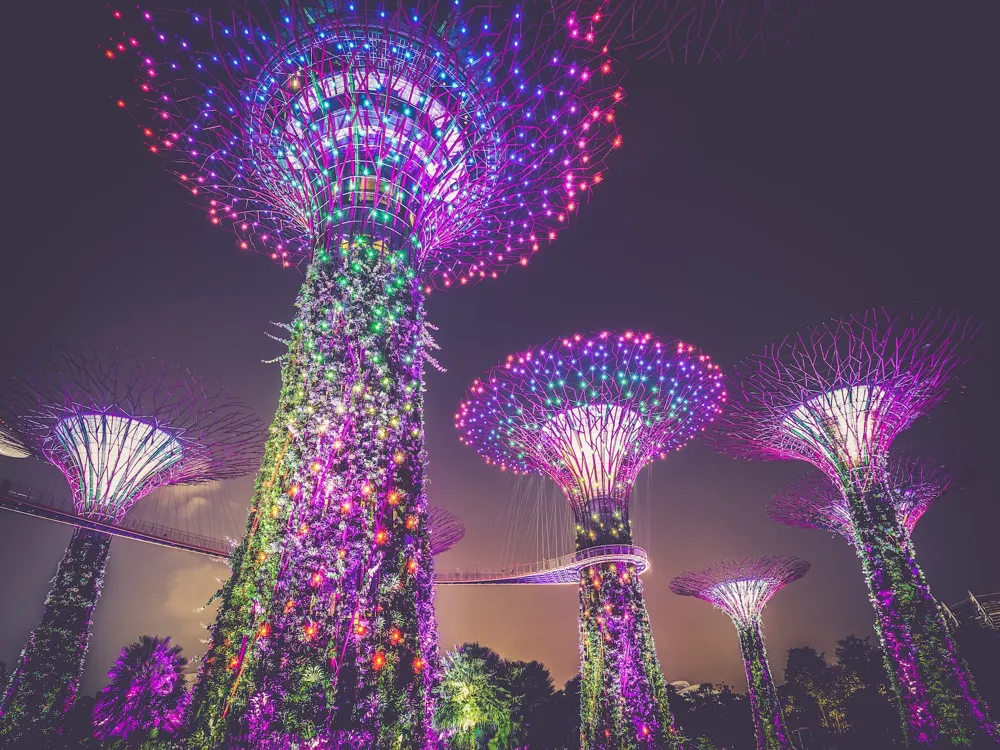
Gillman Barracks, once the house of the British Army, is a centre of contemporary arts in Singapore. The arts cluster is home to international art galleries, restaurants and the NTU Centre for Contemporary Art, part of the prestigious Nanyang Technological University. These services are all found in the well-maintained colonial barracks found at the site. One can marvel at the elegant blend of the colonial architecture of Gillman Barracks and the buildings with the ever-evolving arts sphere of the modern world.
Named after Sir Webb Gillman of the British Army, the Gillman Barracks were designed to accommodate the expansion of the British Army in Singapore. After their departure, the authorities reused these buildings for educational and commercial purposes while still preserving the architectural and structural integrity of the site. Now a site of cultural exchange and creation, the Gillman barracks have become the site for commercial galleries, non-profit spaces, public museums and major art events like the Singapore Biennale and the Art Stage Singapore while still retaining the colonial heritage of the area. One can even find restaurants and shops here, making it an engrossing experience for visitors. A bi-monthly Art After Dark open house is held on Friday nights where tenants launch new shows, along with hosting music performances and dinners. Free guided tours are organised at Gillman Barracks by the Friends of the Museums, a volunteer organisation in Singapore, helping tourists gain a deeper understanding of the heritage of the site and the culture of Singapore.
Read More
Ginger Garden
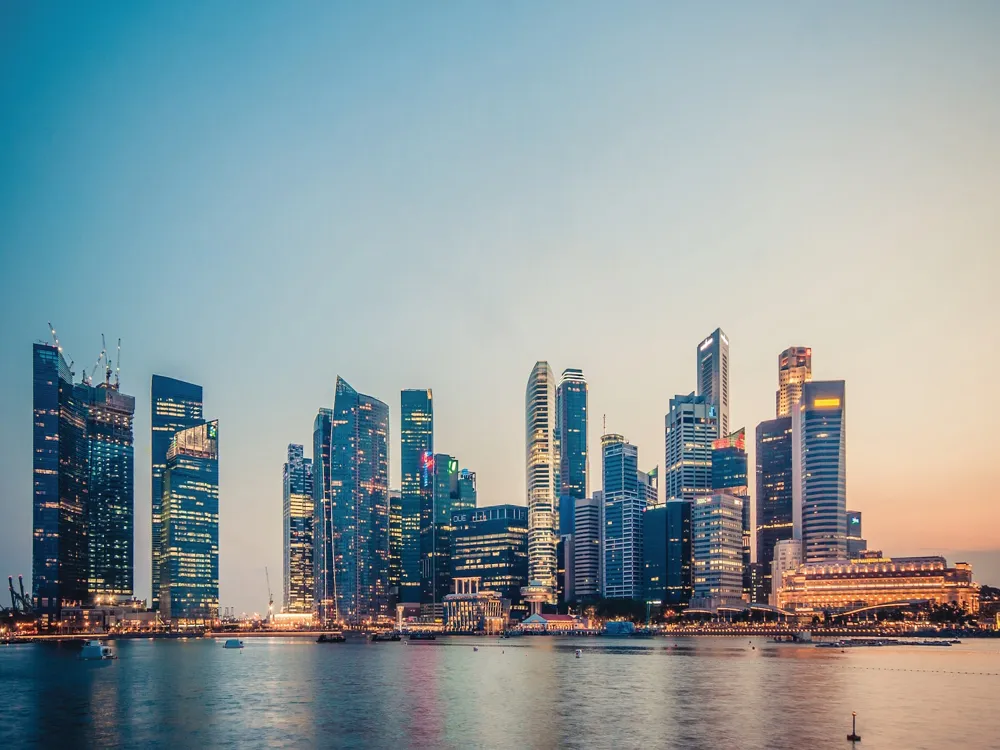
The Ginger Garden is one of the several unique gardens that form the Singapore Botanical Gardens. These gardens that lie next to the National Orchid Garden are known as the richest and most extraordinary gardens as they contain the most amount of different species under one premise. In fact, some of the plants found in the Botanic Garden are so rare that they are rarely found in more than one or two locations. The Ginger Garden is a one-hectare land that is filled with a variety of different species of ginger as well as the related families.
The Ginger Garden contains at least 550 different species or members of the Zingiberaceae or Ginger family. The park also includes attractions such a vast man-made waterfall that is extremely famous amongst photographers due to its sublime beauty and a pool filled with large Amazon water lilies that add to the beauty of the garden. The garden is divided into various zones according to the geographical region the multiple plants are found in.SourceGinger Garden ZonesThe Ginger Garden is divided into various zones each of which contains different species of ginger plants based on where they are found in the world. The garden was divided in such a way that each zone maintains its own distinctive personality that shines through as soon as you enter it.1. What are gingers?The first zone deals with exposing the visitors with all kinds of gingers. The idea of this zone was to explain to the people that the ginger family can be seen in many forms and not the only one we are all used to seeing in the markets. All sorts of ginger species from flowers to small plants and high roots are displayed here. The zone houses at least 1500 species of ginger and its related families.2. Beautiful GingersAs the name suggests, this zone deals with displaying the most beautiful ginger plants from around the world - ranging from having intricate leaves or colourful petals. The zone mostly contains plants of the horticulture nature and thus, several flowers are found here. Look out for the Heliconia's which can be spotted in this zone.3. Pacific ZoneThe pacific zone mainly contains all the islands and the ginger plants found on these islands. The most common ginger plants found in this zone are the Red Ginger or the Bamboo Ginger. The rare ginger to look out for when strolling through this zone is the flowers or Riedelia which have striking petals.Source4. AsiaAsia contains the most diverse and large range of ginger plants. Due to this reason, the Asia zone is the largest zone and is divided into various sections located all around the gardens premise. Among the fascinating plants and the splash of colours, look out for the orange-red of the Spiral Ginger in bloom.5. AfricaThe Africa zone is limited to five families of ginger species that are native to this continent. Each of these five families is unique in their own sense and will not fail to make you acquire some knowledge about its species.6. EthnobotanyEthnobotany is the study of the usefulness of plants in various cultures. The zone deals with studying in depth and making visitors understand exactly which kind of ginger is used in which way and its exact properties. The Ethnobotany zone also deals with the origins of the various species and the reason for their geographical location.Source7. Tropical AmericaThe Tropical America zone deals with six families of ginger in particular. These six families are exclusively found in this zone. These plants are known to have some of the most beautiful and delicate leaves from the entire ginger species.8. Ginger EnclosureThe ginger shelter is a sort of enclosure for visitors to relax and sit under the shade that the shelter provides. The ginger shelter also contains a total of eight panels that give you all the information you would need about the species that are housed in the Ginger Garden and are proudly displayed for everyone to admire.Other than these zones the Ginger Garden also contains the waterfall which is a very popular spot and known by everyone in Singapore due to its mesmerising beauty. The Banana Gallery whose main attraction is the mural by Michele Piccoli and the Native Gingers of Singapore are also housed in the Ginger Garden. The last zone of this garden is the Gingers of Indochina which is the least explored region but still contains some of the most distinct and extinct gingers in the world.SourceGinger Garden RestaurantThe Halia Restaurant and the Villa Halia are located exactly in the middle of the Ginger Garden. Its surroundings inspire the restaurant's name as Halia in Malay means Ginger. The restaurant's menu is formed with a lot of precision and thought as most of the dishes inculcate the various species of ginger in their dishes in some way. The restaurant is the perfect place to rejuvenate surrounded by the beauty and aroma of nature.SourceHow To Reach Ginger GardenMajor Entrances- Tanglin Gate (15-minute walk), Nassim Gate (10-minute walk), Cluny Park Gate (15-minute walk), and Bukit Timah Gate (20-minute walk)By MRTNearest MRT Station- Botanic Gardens MRT Station (entrance through Bukit Timah Gate)By BusBus Nos. - 7, 48, 66, 105, 123, 151, 153, 154, 156, 170, 174, and 186Safety Procedures & TipsSmoking is not allowed on the premises.No open fires or barbeques.No plucking of plants.No tampering or damaging park property.No motored vehicles.No cycling, skateboarding, skating or scooters allowed in the premises.No fishing or feeding of birds.No freeing of animals (pets).The best time to visit the Ginger Garden is in June or August when most plants are blooming.The mornings or early afternoons are especially preferred for visits to the Ginger Garden.
Read More
Great Singapore Sale
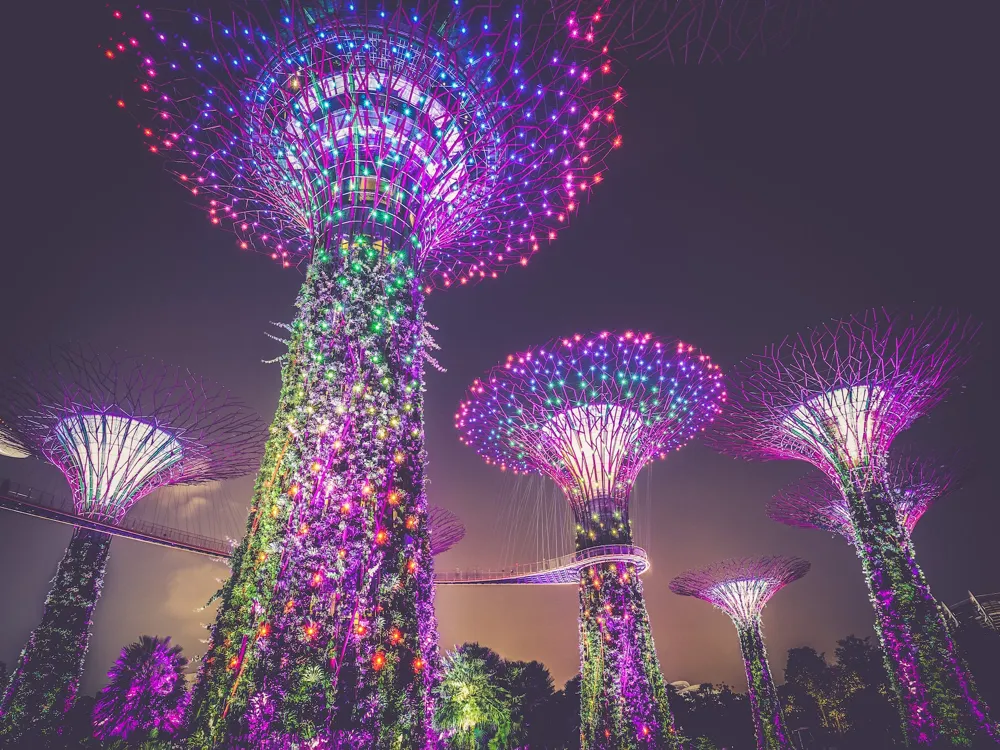
The Great Singapore Sale is one of the biggest shopping festivals in Singapore. This month-long event is all about great buys at discounted rates and taking part in exciting activities that are particularly organised for the occasion. Even the smaller shops in different parts of the city take part in the sale and offer steep discounts on the original price. The Great Singapore Sale is managed by the Singapore Retailers Association and aims at boosting tourism in this region.
The Great Singapore Sale officially started in 1994 and it continues even today. The sale season runs for five weeks and transforms the island into a shoppers’ paradise. There are great deals on every item possible that buyers are eyeing for - fashion, accessories, electronics, cosmetics, spa treatments, toys and so on. This extravagant event not only entices locals but attract millions of non-natives from other parts of the world. Indeed, it is a great time for bargain hunters to go on an unlimited shopping spree in Singapore.
Read More
Green Corridor
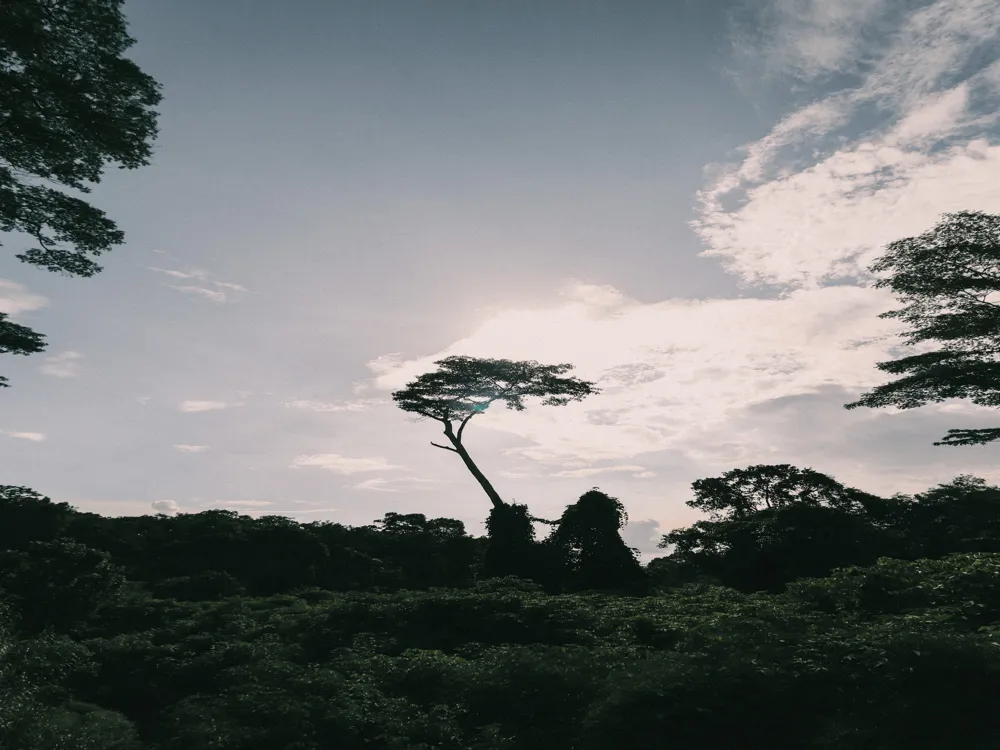
Singapore's Green Corridor is one of the best walking trails in Singapore, steeped in heritage, nature and sunshine amidst its unimpaired paths. A 26-kilometre stretch of railway line that once used to connect the Malaysian Peninsula to Singapore, the trail has now been revamped to give visitors a taste of the natural vegetation and greenery of the country. While parts of the tracks have been removed to facilitate easy walking, some parts have been kept intact to give hikers a feel of what the track used to be like. Stretching from old Tanjong Pagar Rail Station in the south all the way to the Woodlands Checkpoint in the north, the now-unused line is an uninterrupted stretch of greenery that is used as a jogging track.
Walking through this picturesque trail, also known as the Rail Corridor, takes one down the history lane of the rail heritage of the land. With terrains ranging from gravel, grass, pavement, woodland, secondary forest, and rainforest, the Green Corridor is a wonderfully tranquil location positioned within the bustling urbanopolis of Singapore - the trail is now available on Google Maps too. Visitors can walk, jog, or bike across the Green Corridor and enjoy the stunning Instagram-worthy photo-ops with tunnels, bridges, and abandoned railway tracks. While parts of the corridor are closed for construction and redevelopment, most areas are open to the public - this is a free option to explore the lesser-known sights of the Garden city - there is no sign of urban life in most areas of the trail! A 10 km running route from the Tanjong Pagar Rail Station to the Bukit Timah Rail Station forms the course for the Green Corridor Run, an annual race in Singapore and one of the most anticipated-running events in the city-state.
Read More
Haji Lane
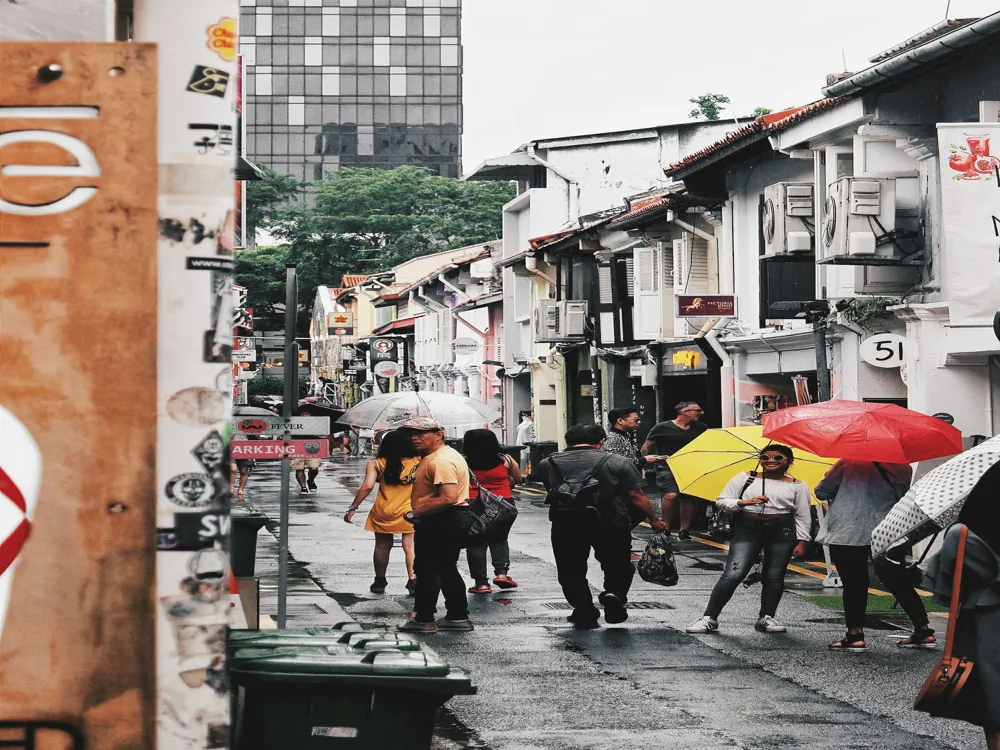
One of the narrowest streets in Singapore, Haji Lane is a chic alleyway splattered with colourful independent boutiques, cafes and quirky stores, sitting in the heart of Kampong Glam. The Bohemian street is lined with yoga centres, tattoo parlours, and vintage Egyptian restaurants attracting the young crowd who visit Haji Lane to shop at Singapore's nifty shops or just hang out with friends. The colourful graffiti splashed all across Haji Lane is another major attraction beckoning indie-minded shoppers looking to buy trendy and affordable brands.
The close-knit Haji Lane community is very different from its modern neighbours of Bugis Street or the sleepy Arab Street. The lane maintains a vintage rustic style mixed with the new edgy hipster look with hints of Peranakan architecture that attracts millions of pedestrians to stroll through the quaint street, even if it's just for the lively vibe. The unique stores at Haji Lane and the colourful atmosphere which is further emphasised by the graffiti on the walls of the alley makes it a hotspot for clicking pictures and hence is a must-visit for all photographers.
Read More
Hajjah Fatimah Mosque
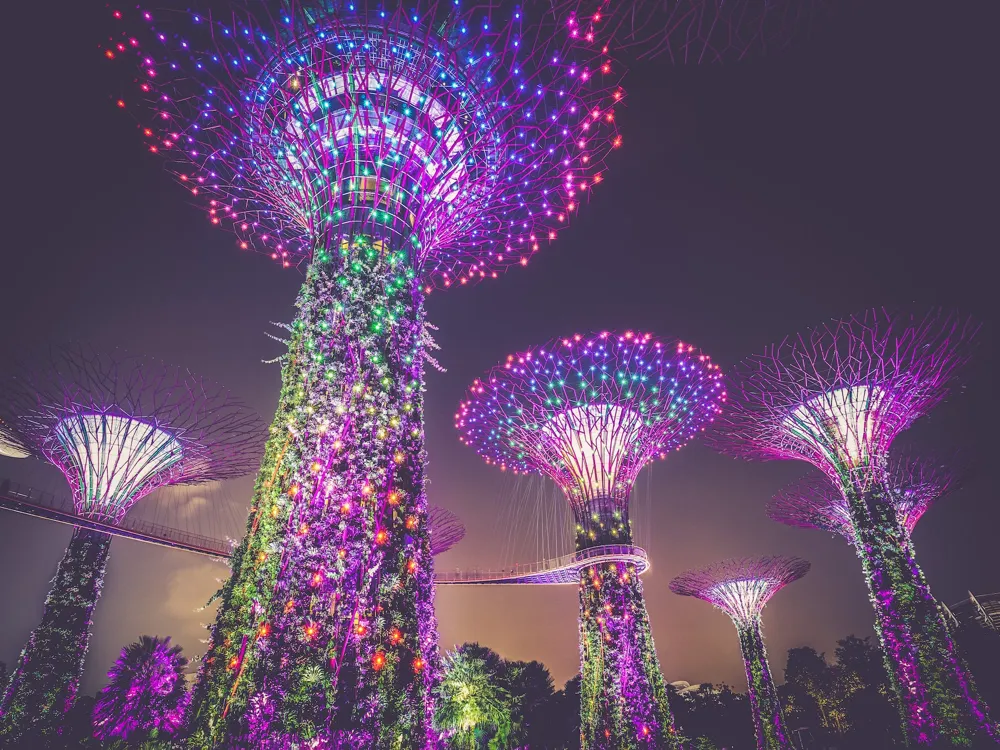
The Hajjah Fatimah Mosque, located in the Kampong Glam area of Singapore, is one of the only three mosques in Singapore to be named after a benefactress. Fatimah was a Malaccan woman who accumulated huge amounts after taking over her deceased husband's business. The most prominent feature of Masjid Hajjah Fatimah is its minaret, often referred to as "Singapore's Leaning Tower", which is a four-level minaret tilting at a six-degree angle due to moisture seepage. Besides this, this mosque is said to resemble the St.Andrew's Cathedral at the City Hall.
The pristine Hajjah Fatimah Mosque is a testimonial to the flourishing Muslim communities who made generous contributions for building it. Designed by an unknown English man and built by French contractors with the help of Malay labourers, the Mosque bears similarities with the classical elements of an Arab styled dome, Doric columns, Chinese detailing and many such European elements. Its eclectic style of architecture amasses the Middle Eastern, Indo-Islamic and European styles and makes it stand out from other mosques. Masjid Hajjah Fatimah is visited by many residential Muslims of Singapore and on Fridays' prayers, the number doubles up. Islamic Religious Council of Singapore manages this Masjid currently. It was gazetted as a national monument in 1973 and was earlier known as Java Road Mosque because of its location.
Read More
Haw Par Villa
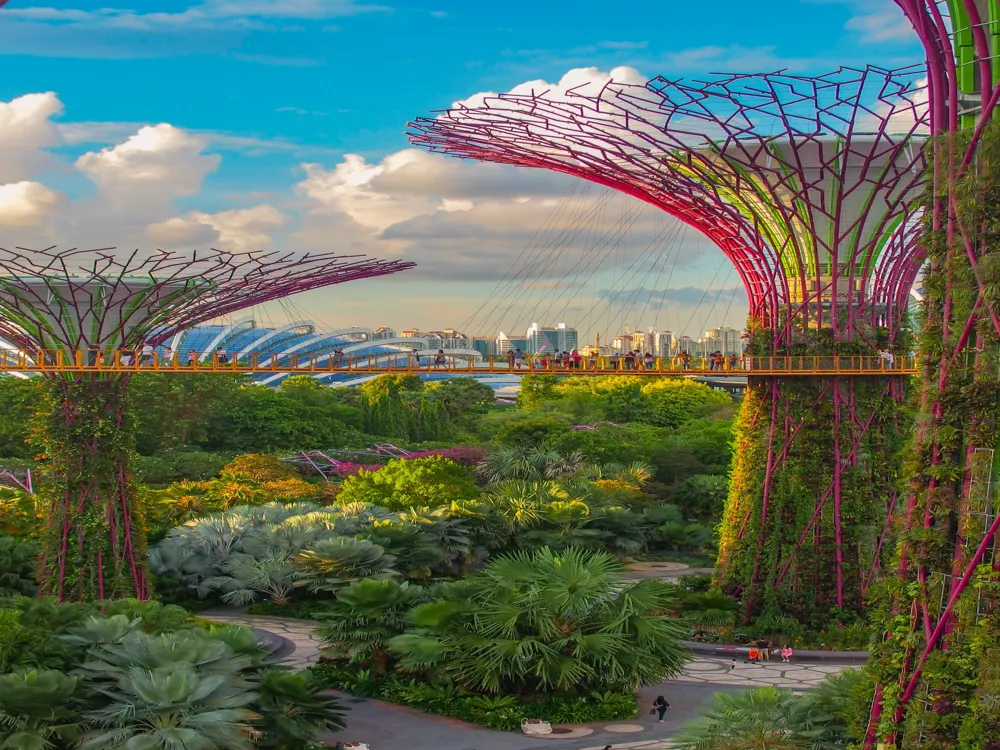
Formerly known as the Tiger Balm Garden, Haw Par Villa is an Asian culture theme park and Singapore's largest outdoor art gallery located along the Pasir Panjang Road. Claimed to be the last of its kind in the world, this repository of Asian folklore and myths is famous for depicting the "Ten Courts of Hell" from Chinese folklore.
Apart from the main attraction, Haw Par Villa is home to over 1000 statues and 150 giant dioramas showcasing scenes from Chinese mythology, illustrations and legends of Confucianism. The iconic red brick road, ascending through a majestic entrance archway, weaves through Chinese classics such as the Eight Immortals and Journey to the West. Statues of leopards, dragons and gigantic gorillas lurk in the corners, while the Guardians of the Underworld greets ones on entering the Ten Courts of Hell. Those interested in uncovering the underlying legends and stories of Haw Par Villa should opt for the tours provided by the garden.
Read More
Hawker Centres
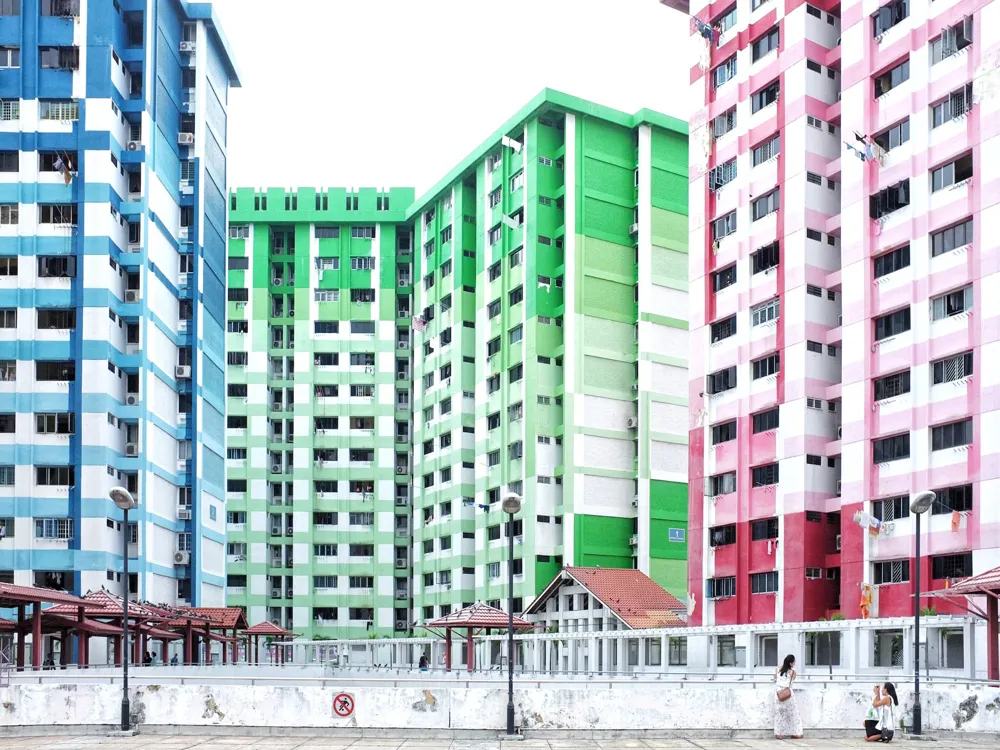
What makes a place worthy of being visited again and again? Sure, the topography, the historically significant spots, the rich cultural heritage, and the places of interest are important factors. However, one thing that surpasses all these points is food. The local cuisine of a place is one of the most significant factors when it comes to deciding if the place in question deserves a second visit. In this respect, Singapore has never disappointed its guests, or locals, for that matter. Be it the spicy Chilli Crab that makes your eyes water or the delicious Kuih for your sweet tooth, Singaporean cuisine is a storehouse of scrumptious food. From Indian to Chinese, from Malay to American, the bustling city-state is ideal for the foodie in you.
So, where should you head out to try all the delectable dishes that Singapore has to offer? The Hawker Centres, of course! Varieties of mouth-watering dishes at dirt-cheap prices are what characterise these food courts. The Singaporean community spirit, a melting-pot of different cultures from around the world, is reflected in these hawker centres. Moreover, this is where you can taste all that Singapore boasts of, in one sitting. The delicious scent of food wafting into your nostrils as you are surrounded by the energetic crowd, engaging in endless conversations over food and life is what sets these centres apart from ordinary restaurants, making for experiences that are unmatchable by any other in Singapore!
Read More
Hay Dairies Farm
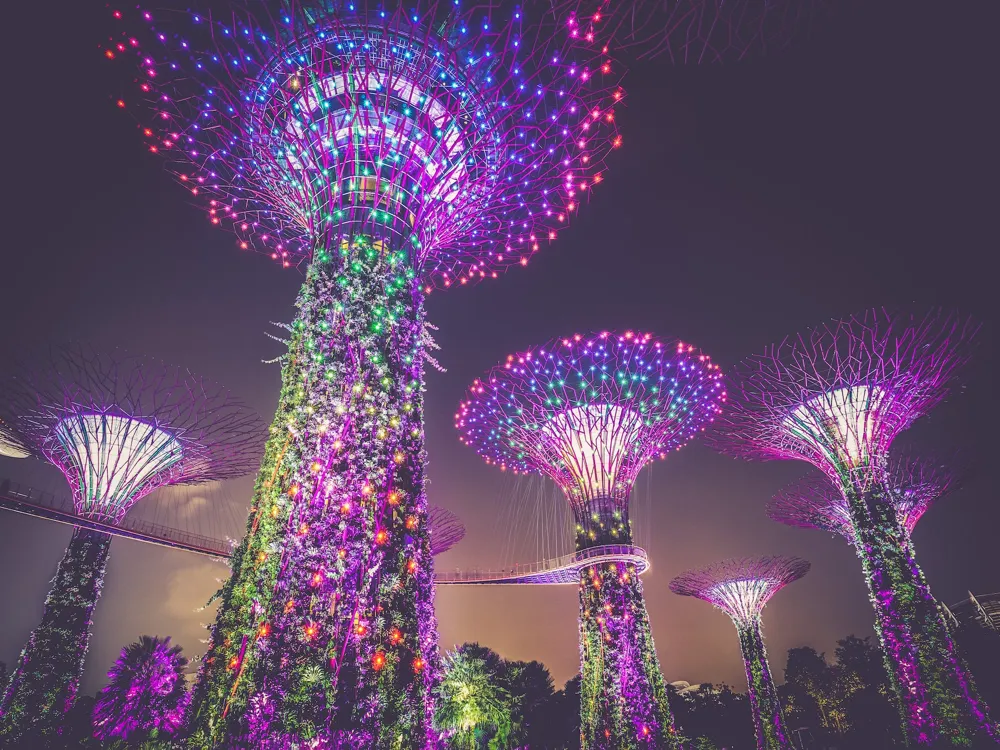
The only goat farm to exist in Singapore since 1988, Hay Dairies is now home to over 800 goats of mixed breed, with their origin heritage from Minnesota in the United States. Not only is the farm one of the leading suppliers of pure goat milk all across Singapore, but it also welcomes visits by individual tourists and families, who are keen to witness the functioning of a farm. For larger groups, the farm also organizes educational tours, and visitors get a firsthand experience of the production of milk.
If you can stomach the strong smell of an animal farm, the Hay Dairies Goat Farm will not be a disappointing trip. Located in a remote area of western Singapore, this farm serves as the perfect spot for one to experience various facets of rearing goats, from milking to feeding to interacting with these adorable creatures. One can also learn the nuances of producing the bottled goat milk found in store outlets across Singapore. As goat milk is a healthy beverage and a good alternative to breast milk, its importance may be better understood during a visit to this unique farm. Alfalfa hay, a GMO-free feed high in proteins, may be purchased for a nominal charge of SGD 5, which children and adults can feed to the goats as they bond with them. Another reason to visit this farm is to indulge in the road trip that leads here, dotted with tall trees and lush greenery devoid of concrete buildings, a rare sight of the gorgeous landscape in an otherwise urbanised Singapore.
Read More
Singapore Travel Packages
View All Travel Packages Singapore
Nearby Places Singapore
Browse Package Collections
Browse Hotel Collections












